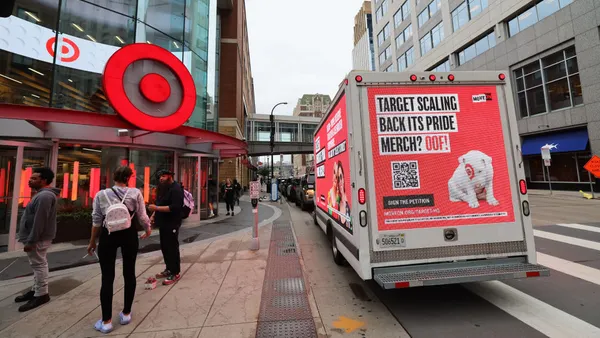Dive Brief:
- Despite recession concerns, several industries have increased their ad spend in 2022, including media and entertainment, technology, travel and education and training, according to a report by MediaRadar shared with Marketing Dive.
- Numerous industries saw a drop in advertising spend in the first half of this year, including finance, home furnishings, restaurants and bars, alcohol and pet supplies.
- The shift in advertising spend reflects changing consumer habits and priorities as the COVID-19 pandemic may no longer be the biggest market concern and driver. Fears of a recession and rampant inflation have seen industries such as restaurants and home furnishing prepare to be impacted.
Dive Insight:
Industries that thrived at the height of the pandemic now find themselves scaling back their advertising spend as inflation soars and consumers grow fearful. While that shift could reflect trouble for industries like finance and real estate, which saw a 15% year-over-year decline in June, some pastimes, like movies, which saw a 325% increase during the same period, appear to be benefiting.
Movie theaters were primarily off limits during the pandemic, however, advertisers have so far spent $1.2 billion to promote movies this year in efforts to get people back through the doors.The media and entertainment industry spent $10.9 billion in the first half of 2022 and also sees a dramatic increase from the $5.8 billion spent in the first half of 2021. Similarly, technology has also seen a major advertising increase of 34% between January and June this year to over $6.7 billion.
Within the same period, consumer electronics ad spend increased 284%, largely attributed to the nearing end of the semiconductor chip shortage. The three major smartphone manufacturers — Alphabet, Apple and Samsung — all pushed new phones during the first half of 2022. In total, the three companies spent $597 million advertising the phones, which make up 10% of the consumer electronics category. Business software also saw a jump with various software subcategories including financial (128%), advertising/marketing (274%) and human resources (417%) dramatically increasing their spend in the first half.
Despite rising gas prices, travel ad spend increased 83% YoY to $2.1 billion, signaling the rise of revenge travel. The cruise ship industry, which saw a number of pandemic-related PR and health crises, increased advertising by 250%. Airline spending is up 140%, with Delta, Southwest and United spending 71% of all airline advertising spending. Both international and domestic tourism boards have increased their spending.
Education is also investing heavily in advertising as students return to campus. In-person university ad spend was up 79% YoY between January and June. Online education has signaled its intention to stay as advertising in this space was up 264% during the same period. Education and training entities are also taking advantage of the “Great Resignation” as many professionals quit their jobs or pursue new careers. Executive education (651%), business schools (33%), culinary schools (1545%) and the humanities offerings (1122%) all increased budgets YoY in H1 2022 compared to H1 2021.
Restaurant and bar advertising saw a 25% decrease so far this year, which could be attributed to both the pandemic, which led marketers to invest in strategies like QR codes due to safety concerns, and ongoing economic turmoil which has led to 73% of U.S. households cutting back on dining-out spending.
While the alcohol industry is seen by many as recession proof, ad spend in the industry decreased 21% YoY in the first half of the year. However, after the pandemic led to an excessive drinking increase of 21%, many consumers are looking to cut back. Anheuser-Busch’s ad spending was 211 times higher in H1 2021 than in H1 2022. Alcohol subscription boxes, which took off during quarantine as a way to break monotony, cut advertising by 96%. Winc, known for its wine boxes, cut spending by 98% in the first half of this year.
Advertising for the pet market also fell 8% so far this year. During the pandemic, one in five households adopted a cat or dog meaning that many of the initial cost of pet ownership, such as shots, crates and beds were incurred at that time. As Americans mark one to two years with their new furry friend, those expenses are no longer repeated, instead shifting to cheaper general maintenance on supplies such as food, cat litter and toys. Home furnishings also saw a slight decline of 1% YoY in June.













